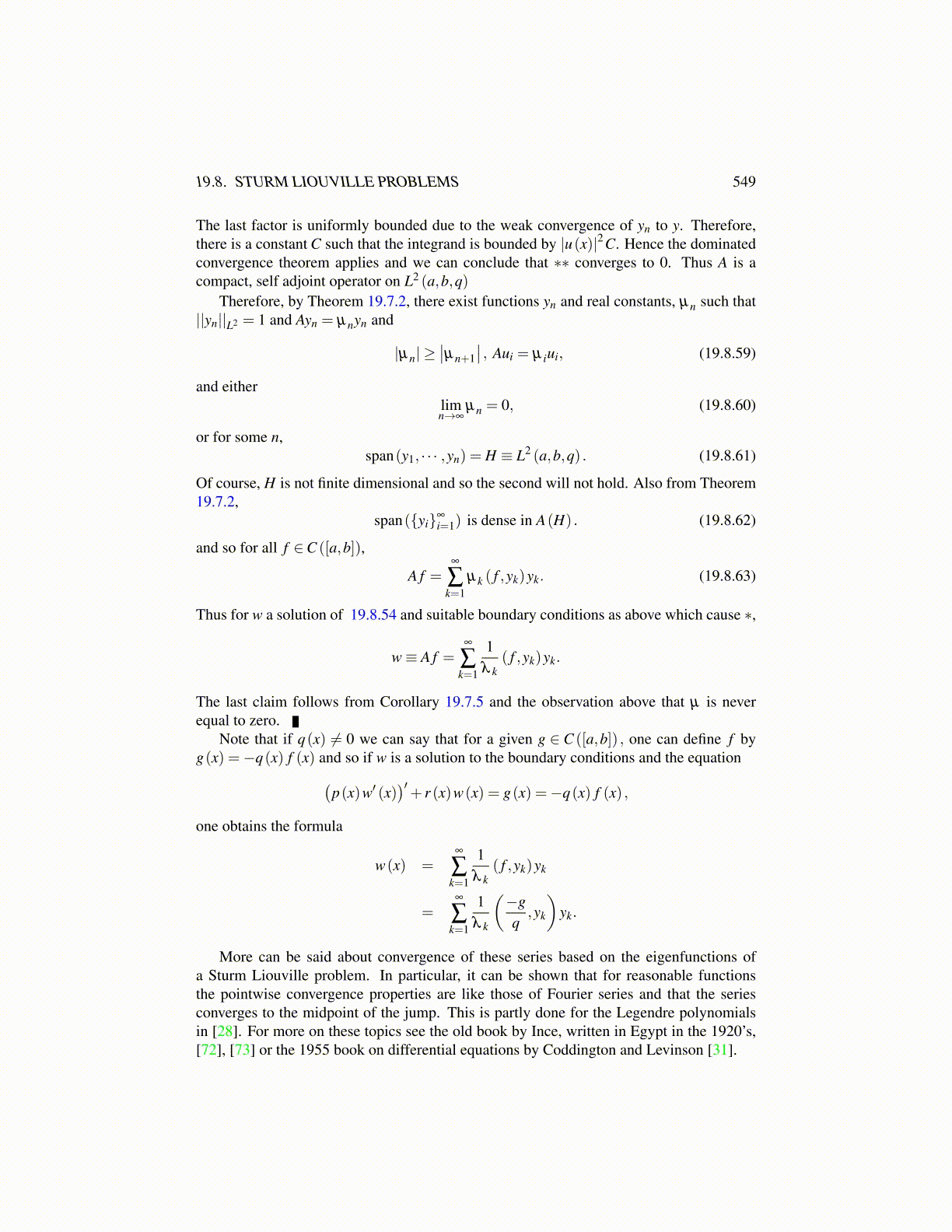
19.8. STURM LIOUVILLE PROBLEMS 549
The last factor is uniformly bounded due to the weak convergence of yn to y. Therefore,there is a constant C such that the integrand is bounded by |u(x)|2 C. Hence the dominatedconvergence theorem applies and we can conclude that ∗∗ converges to 0. Thus A is acompact, self adjoint operator on L2 (a,b,q)
Therefore, by Theorem 19.7.2, there exist functions yn and real constants, µn such that||yn||L2 = 1 and Ayn = µnyn and
|µn| ≥∣∣µn+1
∣∣ , Aui = µ iui, (19.8.59)
and eitherlimn→∞
µn = 0, (19.8.60)
or for some n,span(y1, · · · ,yn) = H ≡ L2 (a,b,q) . (19.8.61)
Of course, H is not finite dimensional and so the second will not hold. Also from Theorem19.7.2,
span({yi}∞
i=1) is dense in A(H) . (19.8.62)
and so for all f ∈C ([a,b]),
A f =∞
∑k=1
µk ( f ,yk)yk. (19.8.63)
Thus for w a solution of 19.8.54 and suitable boundary conditions as above which cause ∗,
w≡ A f =∞
∑k=1
1λ k
( f ,yk)yk.
The last claim follows from Corollary 19.7.5 and the observation above that µ is neverequal to zero.
Note that if q(x) ̸= 0 we can say that for a given g ∈ C ([a,b]) , one can define f byg(x) =−q(x) f (x) and so if w is a solution to the boundary conditions and the equation(
p(x)w′ (x))′+ r (x)w(x) = g(x) =−q(x) f (x) ,
one obtains the formula
w(x) =∞
∑k=1
1λ k
( f ,yk)yk
=∞
∑k=1
1λ k
(−gq
,yk
)yk.
More can be said about convergence of these series based on the eigenfunctions ofa Sturm Liouville problem. In particular, it can be shown that for reasonable functionsthe pointwise convergence properties are like those of Fourier series and that the seriesconverges to the midpoint of the jump. This is partly done for the Legendre polynomialsin [28]. For more on these topics see the old book by Ince, written in Egypt in the 1920’s,[72], [73] or the 1955 book on differential equations by Coddington and Levinson [31].